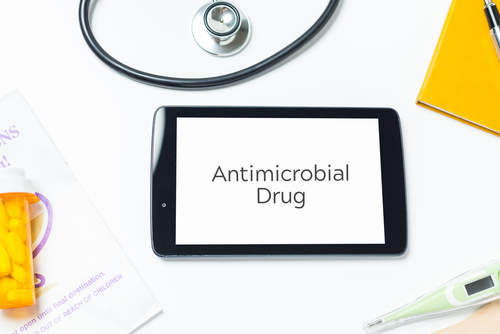5 Antimicrobials and their Adverse Drug Reactions to keep an eye on
M3 India Newsdesk Aug 11, 2017
Adverse Drug Reactions (ADRs) due to antimicrobials is a significant health problem, especially in a developing country like India which has a large drug consuming population.

Though adverse reaction can occur with any class of drugs, the most troublesome classes of drugs contributing to Adverse Drug Reactions were antibiotics followed anti cancer drugs. Antimicrobials are implicated in causing a higher number of ADRs compared to other class of drugs. Spontaneous detection and management of the "Adverse Drug Reactions" is critical.
Adverse drug reactions are implicated with the use of certain antimicrobial drugs such as cephalosporins, fluoroquinolones, penicillins, antitubercular drugs, macrolides, sulfonamides and tetracycline. High-frequency adverse drug reactions are observed with ceftriaxone, ciprofloxacin, rifampicin, azithromycin. Fixed dose combinations of amoxicillin plus Clavulanic acid (Penicillins) and a certain irrational combination of ciprofloxacin plus Tinidazole (Fluroquinolones) also cause adverse drug reactions.
Most of the ADRs go unnoticed in pre-marketing trials as the sample sizes are small, and these ADRs become more evident later when the drugs become a part of the clinical practice. According to an article published in the recent edition of Indian Journal of Pharmacy and Pharmacology, most antimicrobials have one or the other adverse effect. Some of these are discussed here.
Beta Lactam derivatives
Penicillins and cephalosporins are still widely used for many bacterial infections though many bacteria have become resistant. Most physicians do not enquire if their patient is allergic to penicillin or related drugs. High incidence of adverse drug reaction with cephalosporins can be managed by prescribing a test dose before the full dose administration. Possibilities of an adverse drug reaction with cephalosporin escalate if there is a past history of allergy to penicillin. Possible ADR are mild to moderate allergy or in serious cases, anaphylaxis. Commonly observed ADRs due to the use of beta lactam antibiotics include rash, urticaria, superinfection, erythema, and diarrhea.
Macrolides
It has been proposed that, among all antimicrobials, macrolides have the highest potential to cause QT interval prolongation and Torsades de pointes, a life threatening arrhythmia. In addition, cutaneous adverse drug reactions like maculopapular and vesiculobullous rash are commonly observed type of ADR. Sensorineural hearing loss is a serious ADR associated with low dose oral azithromycin. Other infrequent ADRs include allergic reactions, eosinophilia, changes in the taste, and hepatotoxicity.
Antitubercular drugs
It is well established that all the first line anti-tuberculosis drugs cause cutaneous ADR. The cutaneous ADRs that may occur due to antitubercular drugs may range from mild symptoms such as pruritus, lichenoid eruptions, and urticaria to severe reactions which include acute generalized exanthematous pustulosis, toxic epidermal necrolysis, and Stevens-Johnson syndrome (SJS). To eliminate the offending drug from the treatment regimen, a diagnostic rechallenge in a controlled environment, for anti-tuberculosis drugs has to be strongly imposed.
Sulfonamides
Previously used for a wide range of infectious disease, sulphonamides are now used for much fewer indications such as AIDS. ADRs of sulfonamides include skin reactions ranging from benign rashes to lethal toxidermias. Rarely, pulmonary reactions, acute liver injury and blood dyscrasias are also observed. These antimicrobials bind to certain proteins and induce specific adverse immune reactions. Other sulfonamide-associated adverse drug reactions include bullous eruption, erythroderma, fixed drug eruption, photosensitivity, and aphthous stomatitis.
Tetracyclines
This class of antimicrobials can produce severe gastrointestinal manifestations in both toxic and biologic basis. Amongst the class of tetracyclines, minocycline benefit to risk ratio has been observed to be clearly lower than that of doxycycline. Hypersensitivity syndrome reaction and drug-induced lupus have been shown as the ADR of minocycline. It should be no longer considered as first-line therapy for inflammatory skin disorders, especially acne.The ADRs that may occur due to the use of tetracyclines include phototoxicity, fatty liver, and oesophagal ulceration.
-
Exclusive Write-ups & Webinars by KOLs
-
Daily Quiz by specialty
-
Paid Market Research Surveys
-
Case discussions, News & Journals' summaries